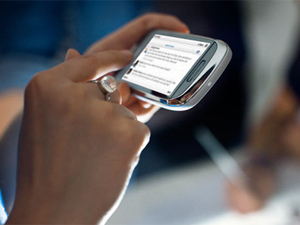



Date:29/02/16
 Huawei released its small cell white paper titled “Five Trends to Small Cell 2020”, explaining Huawei's stance on the development of the small cell industry. Huawei small cell is committed to helping operators build an open and converged small cell network that supports future-oriented sustained evolution.
Huawei released its small cell white paper titled “Five Trends to Small Cell 2020”, explaining Huawei's stance on the development of the small cell industry. Huawei small cell is committed to helping operators build an open and converged small cell network that supports future-oriented sustained evolution.
The number of global mobile broadband (MBB) users is expected to reach 6.7 billion by 2020. The cellular Internet of Things is predicted to register 1 billion connections worldwide. With the growing popularity of VoLTE, 4K video, virtual reality, and smart wearable and implantable devices, daily single-user mobile traffic is likely to exceed 5 GB. This level of traffic will cause the network to fall short of the increasing expectations of service experience.
80% of mobile traffic is generated indoors, especially in public locations. The tidal effect is becoming more prominent than ever. Distributed antenna systems (DAS) are unable to provide sufficient network capacity and meet MBB development demands. As remarked by Peter Zhou, transforming indoor networks through indoor digitalization into indoor MBB networks that allows for ultra large capacity, software-defined solutions, and long-term evolution is inevitable for MBB development. Indoor digital networks, like running water and electricity, will be regarded as an indispensable prerequisite during the planning and selection of buildings.
Outdoor hotspots, particularly those in downtown areas, are experiencing difficulty in acquiring macro sites. It is widely accepted that outdoor small cells will play a more important role in addressing this issue. In the future, outdoor small cells must blend into its surroundings nicely and support easy deployment, multimode multiband applications on single devices, and wireless backhaul while providing huge bandwidth. As pointed out by Peter Zhou, support for easy deployment and coordination with macro networks is essential to supplementing the coverage and capacity of macro networks and improving spectral efficiency and user experience.
The number of global mobile broadband users to reach 6.7 billion by 2020
 Huawei released its small cell white paper titled “Five Trends to Small Cell 2020”, explaining Huawei's stance on the development of the small cell industry. Huawei small cell is committed to helping operators build an open and converged small cell network that supports future-oriented sustained evolution.
Huawei released its small cell white paper titled “Five Trends to Small Cell 2020”, explaining Huawei's stance on the development of the small cell industry. Huawei small cell is committed to helping operators build an open and converged small cell network that supports future-oriented sustained evolution.The number of global mobile broadband (MBB) users is expected to reach 6.7 billion by 2020. The cellular Internet of Things is predicted to register 1 billion connections worldwide. With the growing popularity of VoLTE, 4K video, virtual reality, and smart wearable and implantable devices, daily single-user mobile traffic is likely to exceed 5 GB. This level of traffic will cause the network to fall short of the increasing expectations of service experience.
80% of mobile traffic is generated indoors, especially in public locations. The tidal effect is becoming more prominent than ever. Distributed antenna systems (DAS) are unable to provide sufficient network capacity and meet MBB development demands. As remarked by Peter Zhou, transforming indoor networks through indoor digitalization into indoor MBB networks that allows for ultra large capacity, software-defined solutions, and long-term evolution is inevitable for MBB development. Indoor digital networks, like running water and electricity, will be regarded as an indispensable prerequisite during the planning and selection of buildings.
Outdoor hotspots, particularly those in downtown areas, are experiencing difficulty in acquiring macro sites. It is widely accepted that outdoor small cells will play a more important role in addressing this issue. In the future, outdoor small cells must blend into its surroundings nicely and support easy deployment, multimode multiband applications on single devices, and wireless backhaul while providing huge bandwidth. As pointed out by Peter Zhou, support for easy deployment and coordination with macro networks is essential to supplementing the coverage and capacity of macro networks and improving spectral efficiency and user experience.
Views: 496
©ictnews.az. All rights reserved.Similar news
- Azerbaijani project to monitor disease via mobile phones
- Innovative educational system to be improved under presidential decree
- NTRC prolongs license of two TV and radio organizations for 6 years
- Azerbaijan establishes e-registry for medicines
- Azerbaijani museum introduces e-guide
- Nar Mobile opens “Nar Dunyasi” sales and service center in Siyazan city
- International conference on custom electronic services held in Baku
- OIC secretary general to attend COMSTECH meeting in Baku
- Azerbaijan develops earthquake warning system
- New law to regulate transition to digital broadcasting in Azerbaijan
- Azerbaijani State Social Protection Fund introduces electronic digital signature
- Intellectual traffic management system in Baku to be commissioned in December
- Tax Ministry of Azerbaijan started receiving video-addresses
- World Bank recommends Azerbaijan to speed up e-service introduction in real estate
- Azerbaijan to shift to electronic registration of real estate





















